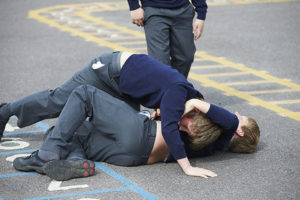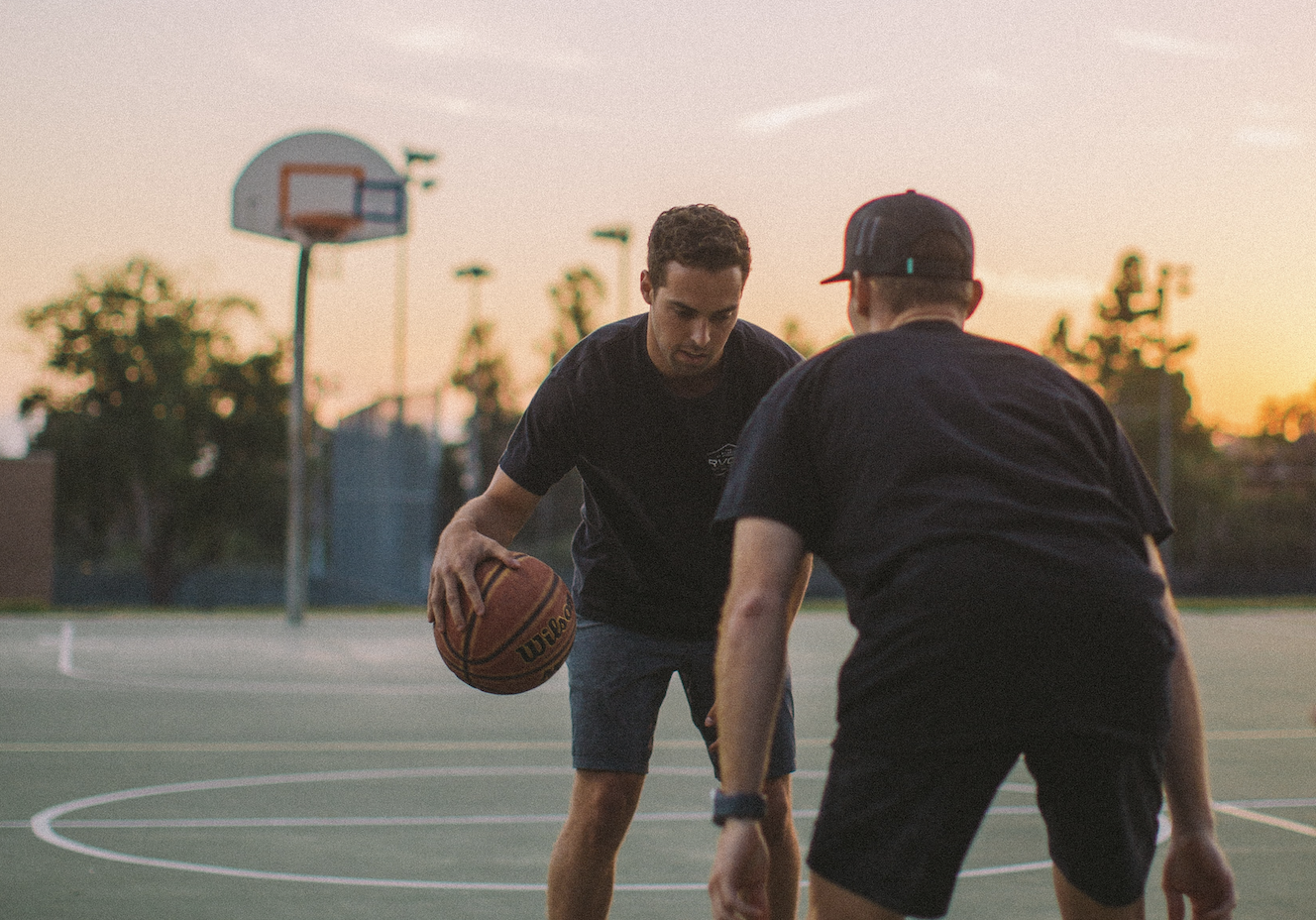Engagement, modeling, and trust animate the approach to forming character at St. Thomas More Academy


“It’s pedantic if I’m lecturing you on virtue but you never see me exercise virtue. If I’m playing basketball and someone elbows me in the face, how do I respond?”
This simple question about throwing elbows encapsulates the leadership framework of Deacon Brad Watkins, Headmaster of St. Thomas More Academy in Raleigh, North Carolina.
When Watkins took the job of headmaster ten years ago, the Catholic prep school was eight years old, the vision of parents who wanted a classical and more distinctly Catholic curriculum than that of the nearby diocesan school. But, according to Watkins, because the school hadn’t been formed by a diocese or an order like the Franciscans or the Jesuits, it lacked a unifying vision. The result was an abundance of discipline issues and a lack of school loyalty.
“We had no guiding spirit,” Watkins said. “We had a lot of problems when I came, and we needed some kind of sense of charism.”
Watkins drew inspiration from a 19th century Italian priest, St. John Bosco. An education reformer, Bosco started schools for at-risk street children employing what he called “the preventive method” to form character.
“What he wanted was teachers so immersed that their loving presence would prevent wrongdoing, because students don’t want to disappoint or injure a loving relationship,” Watkins explained. “He understood priests and brothers to be something between older siblings and parents. He wanted them to play games with students, not watch from the side—to be amongst them and doing what they were doing. It was a really different model. I basically imported that.”
St. Thomas More Academy’s teaching day starts at 7:30 with what Watkins calls the “golden half hour.” At many schools, this time is a chance for teachers to do last-minute tasks before the day begins, but at St. Thomas More, while students congregate and socialize, teachers are in their midst.
“That first half hour is the most critical time of the whole day, and I expect everyone to be interacting and engaging with kids as if they are their own children,” Watkins said. “We say, How was the game? Or, I saw the school play and you were fantastic! I tell the staff, If you do nothing else in this place, please make sure those kids know you love them at the end of the day.”
Beyond building relationships and expressing love, Watkins believes that the modeling done by teachers is vital. Unlike children in centuries past or other cultures, many students today don’t see their parents do much beyond relaxing at the end of a workday, he said. They have few opportunities to see how adults resolve conflicts or tackle tasks. Watkins believes that by living their lives in front of students, teachers have the chance to show them what virtuous adulthood looks like.
“They need to know what happens when two men have a disagreement,” Watkins said. “I want to let them see two male faculty members playing against each other in basketball and what it looks like when there’s a disagreement.”
Watkins’s expectations for engagement extend beyond the first half hour of the day.
“If the kids are outside, we are outside,” Watkins said. “There is no hiding in the faculty lounge. Teachers need to be present and available.”
This kind of radical engagement seems to be paying off in terms of student character. Watkins said that during his tenure, there has never been a fight and classroom disruptions are very rare. There has also never been a theft of any kind; in fact, students don’t lock their lockers and regularly feel comfortable leaving expensive calculators out. The school handbook, rather than listing an overabundance of rules, focuses simply on loving God and neighbor.
“There are no issues of disrespect,” Watkins said. “They get it. They feel loved.”
In addition to the gift of time, students also enjoy their teachers’ trust. One of Watkins’s concerns when he first became headmaster was an atmosphere characterized by sternness and lecturing. This was partly due to the fact that in the school’s early days, the student population included a number of students who had been expelled from public schools and accepted to build enrollment. While many of those students were now gone, a culture of heavy-handedness had persisted.
“We had draconian rules but good kids,” Watkins said. “The leaders had missed the fact that we had totally different kids now, and those kids were reacting to being oppressed.”
Watkins loosened lunchtime and dismissal procedures to give students more freedom. He also changed things like chaperoning high school field trips, letting students explore sites on their own without constant monitoring.
“One way is a culture of fear that says, Something is going to happen and I will be liable,” Watkins said. “The other is a culture of trust that communicates, I expect you to rise up and do what’s right. When you talk about character development, that’s huge. It’s a major paradigm shift.”
Engagement, modeling, trust—they are simple concepts, but at St. Thomas More, they appear to contain remarkable power for developing character.